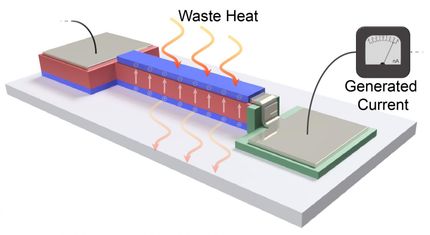Increasing Charge Mobility in Single Molecular Organic Crystals
Studies may help identify best materials for variety of future electronics applications
Organic materials are particularly attractive for potential applications such as flexible displays, or so-called "electronic paper," because they are inherently flexible. "Imagine a computer screen that you could crumple or fold like a sheet of plastic film," says Vladimir Butko, a scientist from the U.S. Department of Energy's Brookhaven National Laboratory. Yet for this and any other electronics application, the materials must also be able to carry an electric current.
"These organic materials, by themselves, have almost no charge carriers - electrons or "holes" - to carry current," Butko says. "They act as insulators. But if we inject charge carriers, we can sometimes create organic devices such as field-effect transistors [FETs], through which charge will flow."
To find out which materials have the best potential for carrying current, Butko has been studying single crystals of molecular organic materials such as pentacene and rubrene. Though these crystals themselves may not have direct applications, they provide the simplest form in which to study the materials' intrinsic electronic properties - unaffected by factors that might play a role in larger samples such as polycrystalline thin films.
The key, says Butko, is to know whether the injected charge carriers will have a high mobility or stay localized. The most stringent test of localization is to cool such a device to very low temperatures: somewhat close to absolute zero. At these low temperatures the mobility edge can be probed without the complication of thermal activation. The studies were done using a physical properties measurement system (PPMS) and electrometers at the Los Alamos National Laboratory.
Once scientists identify the best crystals, they will use thin-film methods to test their applicability for electronic devices from e-paper to large-format display screens.
This research was done in collaboration with Arthur Ramirez, David Lang and Xiaoliu Chi from Bell Laboratories, and Jason Lashley from Los Alamos National Laboratory, and was funded in part by the Office of Basic Energy Sciences within the U.S. Department of Energy's Office of Science.
Most read news
Other news from the department science

Get the chemical industry in your inbox
By submitting this form you agree that LUMITOS AG will send you the newsletter(s) selected above by email. Your data will not be passed on to third parties. Your data will be stored and processed in accordance with our data protection regulations. LUMITOS may contact you by email for the purpose of advertising or market and opinion surveys. You can revoke your consent at any time without giving reasons to LUMITOS AG, Ernst-Augustin-Str. 2, 12489 Berlin, Germany or by e-mail at revoke@lumitos.com with effect for the future. In addition, each email contains a link to unsubscribe from the corresponding newsletter.

























































